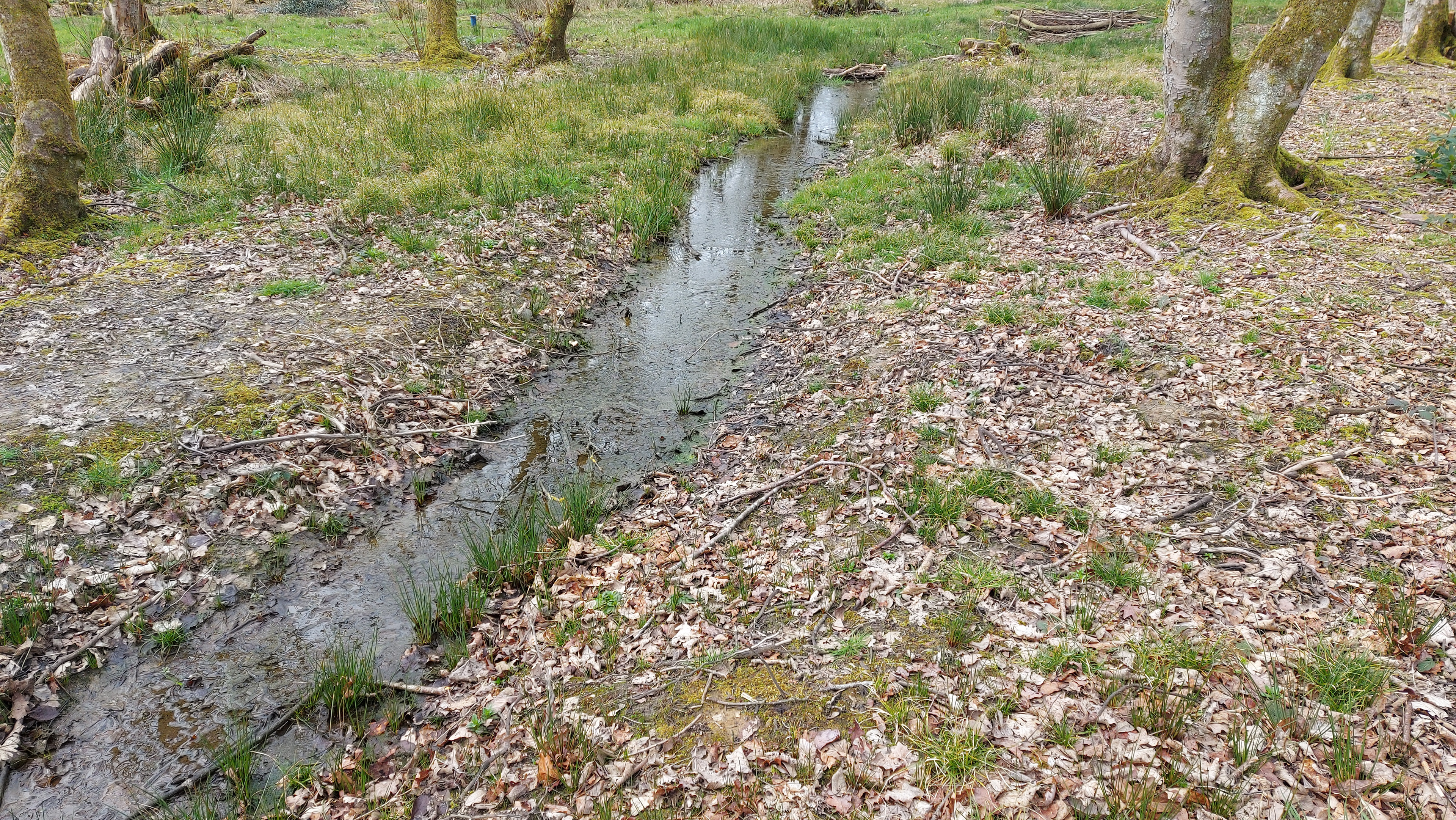I started my research at RHS Bridgewater with other students. We looked at the lake, the surrounding woodland, the walled gardens and the welcome building. This visit was useful as I found out that I was interested in the water features within the site including the lake, the small streams within the woodland and the swamps. When I started my initial ideas I was specifically interested in my sketches of the water and how I interpreted it. When I was with other students, I was able to hear about their favourite part of the gardens and what they were interested in. I then started my research into nature within art, including ceramic artists who are inspired by place and ceramic pieces where nature was used to symbolise a certain message. When looking at the artist Annette Townsend, I was interested at how her knowledge of specific flowers informed her designs and art. From this I wanted to look at the plants that surrounded the bodies of water on the site, more specifically the moss and liverworts. In the paper manipulation workshop, my group and I produced a paper piece which used negative space and involved us all working together to hold up this long piece of paper.


I started making teacups using coiling to get used to the process but to also see what different shapes I can make that are easy for the customer to drink out of. I made a teacup in the shape of the flower and was able to see how I could make a thinner teacup while keeping a strong structure and see how I could make indentations for leaves and the middle of a flower (pistil). I also was able to make a teacup that was inspired by water and creating a handle that was curved in order to connect to the 'river' flowing around the outside of the cup.
I went back to RHS Bridgewater to look at the plants around the water which included getting close up photos of the moss I found near ponds. I used these close up photos to inspire patterns and shapes within my initial ideas. I also looked at other places in RHS Bridgewater that I wasn't able to see before or that I hadn't looked at close up like the Chinese Streamside garden. I also went to the cafe and ordered a cup of tea to see how it was served and how it could potentially be changed. I was also able to take measurements to see how big the teacup I need to make should be and use the teapot.

After using coiling as a technique so far, I continued to use this with my work but using crank which was a good decision as it was easy to work with when coiling. I made a teacup that used moss as inspiration and created a pattern that resembled moss when zoomed in. I glazed it and although I was happy with the end result, there were a few drips and to improve it I would make the teacup again and use less glaze when glazing it again to avoid this and experiment using a different glaze. I continued using moss as inspiration and made a bowl and dish that used different moss inspired patterns that I had created when making material samples. I would've liked to seen what these textures looked like on a teacup where I could've made a set of teacups with different moss inspired patterns. Although I liked the patterns and textures I produced, I believe that glazing them and having a shine would've made the patterns look better. In future projects I will improve my work by being more efficient with my time and leaving time to glaze and creating more glazed and textured material samples early on in the project.